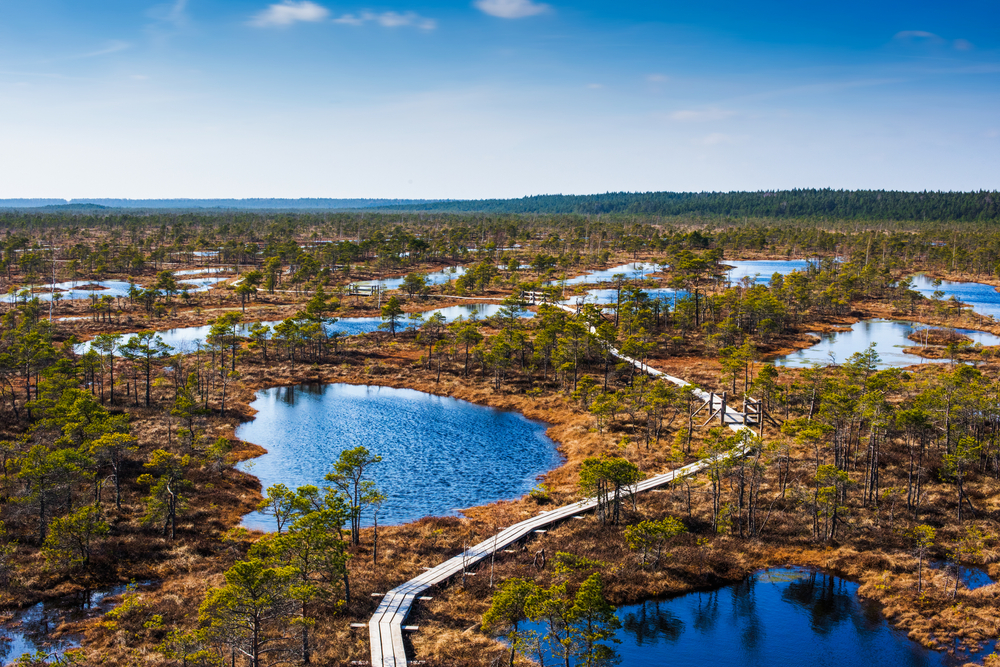Kemeri Overview
Ķemeri National Park, locally known as Ķemeru Nacionālais Parks, is one of Latvia’s most enchanting natural treasures. Situated near the Gulf of Riga in western Latvia, this park covers an area of approximately 138 square miles (358 square kilometers) and is a haven for diverse ecosystems and remarkable biodiversity.
Established in 1997, Ķemeri National Park is a blend of ancient bogs, dense forests, mineral springs, and coastal meadows, offering a striking mosaic of landscapes that define its unique character.
The park’s terrain is dominated by the Great Ķemeri Bog, a pristine peatland that has remained untouched for thousands of years. Its labyrinth of boardwalks provides visitors with mesmerizing views of moss-covered bog pools, vibrant sphagnum moss carpets, and the occasional scattered pine trees.
The park also features coastal dunes, freshwater lakes like Lake Kaņieris, and mineral springs that have been used for therapeutic purposes for centuries. Dense mixed forests, primarily consisting of pine, birch, and spruce, extend across much of the park, providing a home to a rich array of plant species, including rare orchids and mosses.
Ķemeri National Park is a paradise for wildlife enthusiasts. It supports an impressive array of bird species, making it a top destination for birdwatching. The park is part of a significant migration corridor, and species such as the white-tailed eagle, black stork, and the vibrant Eurasian hoopoe can be spotted.
Mammals such as red deer, wild boar, and the elusive Eurasian lynx roam the forested areas, while bats, including the protected pond bat, thrive in the park’s wetlands. The bog pools and lakes teem with amphibians and insects, creating a vibrant food chain that sustains the park’s delicate ecosystem.
Popular features of Ķemeri National Park include the Great Ķemeri Bog Boardwalk, where visitors can explore the tranquil bog landscape and enjoy breathtaking sunrise or sunset views. Lake Kaņieris, with its shallow waters and rich birdlife, is perfect for kayaking and birdwatching.
The ancient sulphur springs and mud baths, historically renowned for their healing properties, offer a glimpse into the region’s therapeutic heritage. The Green Dune, an ancient coastal dune ridge now overgrown with forest, provides unique hiking opportunities.
Visitors can engage with the park through various activities like hiking, cycling, and kayaking. The park’s well-marked trails cater to all fitness levels, while its observation towers and platforms offer exceptional opportunities for photography and wildlife spotting. Seasonal guided tours enrich the experience with insights into the park’s ecology and history.
Despite its natural beauty, Ķemeri National Park faces conservation challenges, including habitat loss from surrounding urban development and climate change impacts on its sensitive ecosystems. However, park management has achieved notable successes, such as the restoration of water flow in the bogs to support wetland habitats and the promotion of sustainable tourism practices. The park’s inclusion in the Natura 2000 network highlights its importance for European biodiversity conservation.












































































